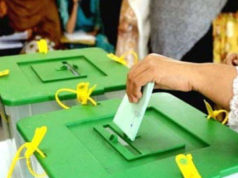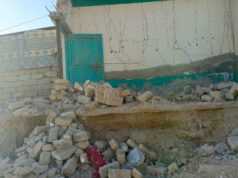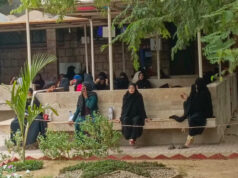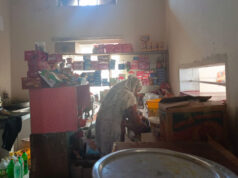Anisa Shabir
“It was 2012 when I chose mass communication at Balochistan University of Information Technology, Engineering and Management Sciences (BUITEMS). Back then, I didn’t know if there were any female reporters in the field. We didn’t even know their names,” recalled Tabinda Aqdas, a former reporter at Dawn and Dunya news, while holding a cup of tea, her gleamy eyes giving out the vibes of nostalgia she was experiencing at the moment.
She would become the first and only female reporter as an intern at Dawn News – even before that she was the only girl in a class full of boys – then at Dunya News, only to find herself quitting the job and ending up as a lecturer at a women’s university. Tabinda later came to know that in 2012 there were only three female journalists working in the field in Quetta. “Now, in 2019, there are only five,” she said, giving a stark reminder about the challenges which prevent female journalists from entering the field in Balochistan.
Balochistan is an inhospitable region for journalists to navigate. The local journalists, particularly males, are at the forefront in the field, but their access too, to certain areas is limited due to security threats, and there are stories which cannot be reported because they are considered “sensitive,” further putting limitations on the freedom which a journalist must possess for reporting the truth. For a female reporter to venture into these areas, other than the capital of the province, is a far-fetched dream- if only there were enough of them who could undertake the journey.
It all starts with the very first step a female in Balochistan takes: graduate with the degree of journalism. That is easily done. The problem arises when the time comes to enter the field. Families, wary of the working conditions, security threats, and the possibility of their family member facing harassment at the workplace or in the field deny the girl permission to pursue the career of her choice. Few get the privilege of pursuing a career of their choice. Those who do are lucky. Seema Kamal, an assignment editor at Dunya News, initially found her family reluctant to allow her, but she managed to work in the field and later got the post of an assignment editor.
The gap is also identified by the number of students who get enrolled in the departments of journalism of three major universities of Balochistan, namely the University of Balochistan, BUITEMS and Sardar Bahadur Khan Women’s University (SBKWU), and by those who enter the field. According to the annual report of BUITEMS of 2018, the number of female students who got enrolled in the department of mass communication till the fall of 2018, stood at 67, out of 309. A report by Hizbullah Khan for The Express Tribune on March 2017, claimed that 310 female students had received the degrees of journalism from the University of Balochistan. The department of media and journalism was set up at SBKWU in 2013 with only master’s program being offered. In 2016, the department started the BS program, with the first batch having 14 students. Ever since then, the combined strength of master’s and BS programs has quadrupled to 200.
Sima Batool, a political activist and a staff reporter affiliated with the Balochistan Point, sees the increasing number of female students getting enrolled as a positive sign. But she also agrees to the fact that the staggering difference between the number graduating and those making it to the field, which amounts to a drop in the ocean, is suggestive of something extremely wrong.
This only partly explains the problem. The harrowing working conditions within the newsrooms also makes it impossible for young aspiring graduates to pursue their careers. Sadia Jehanghir went through grueling late working hours. To make things worse, the lack of empathy for her when she was pregnant, made her quit the job. Also, the strained relationship between herself and her boss did not make things any better. She, after taking a break, continued her career. It takes the iron will of Sadia to stand up, but many believe that discretion is the better part of valor.
The volatile security atmosphere of the province also makes it difficult even for the male counterparts to work in the field. But sometimes a blow comes from the direction that makes the sanest wonder what will become of the future of those who dare break the barriers and speak truth to power. A case in point is Carlotta Gall, Istanbul bureau chief for the New York Times, who visited Balochistan in 2006. Though a foreigner, which may have given her some immunity, did not save her from the cruelty of those who beat her up, and her belongings were also seized. The way the act was carried out with impunity sheds light on what can happen to journalists in the area and it certainly does not serve as a good omen for the families who are already in two minds about allowing their family members to join the field.
Harassment at the workplace or in the field is under-reported in Balochistan, but the same cannot be said about other parts of the country. Sana Mirza, an anchor-person affiliated with Geo News back in 2014, was harassed while covering the rally of PTI when one of the miscreants threw a bottle at her. She broke into tears live on television.
The adoption of “Harassment Against Balochistan Women at Workplace Bill 2015” by the Balochistan Assembly points to the fact that the cases of harassment at workplace may go unreported, but that the problem exists and it is a matter of time when cases will spring up if the safety of the victim is ensured.
Some of those who are in the field want to quit because of the challenges the job presents, but they have reached the point of no return: all their life they aspired to become journalists and all that time was spent in honing the skills required for the journalistic career. If given a choice between their current job and another with equal pay, they would happily jump at the opportunity. “They have no choice, they want to switch if given a better choice with equal pay,” Tabinda stressed, “but they can’t because their income supports their family.”
Tabinda was lucky enough to have saved herself and switched to a lectureship. When she became a reporter, she was bursting with energy, but then things changed. “I had never seen Civil Hospital, and I never thought that I’d, then I did. But then, I also never thought that I would see the meat market with butchers having blood stains all over them, or stand on the garbage and do reporting …” she was pointing to the frivolous tasks female reporters have to undertake in the beginning, that eventually, with the passage of time wears a person out. It was through reporting that she smelt the stench of dead fish for the first time in the meat market.
Things look bleak, but the hope is not yet lost.
Having more females in the leading positions of editors will help create an environment where female journalists will communicate the challenges they face more effectively.
It is a matter of time when more females will enter the field because it is through them that women of Balochistan will be able to share their stories. “Female journalists are a message of hope!” Sima said. Her words symbolize a message that every emerging and working journalist carries with them.
Share your comments!








